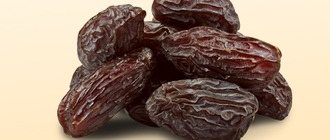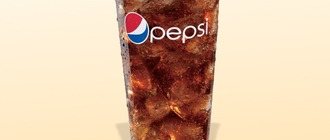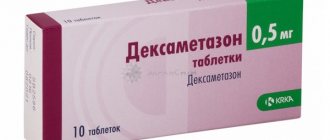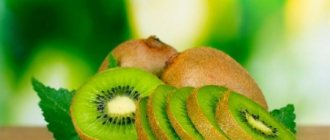A food allergy is a type of childhood food allergy. Unfortunately, for many babies, the body’s first protest against certain foods occurs very early - in infancy.
If the child is lucky and is breastfed, then the risk of an allergic reaction to food is postponed until at least 6-7 months of age. Pediatricians do not recommend introducing complementary foods before the child is six months old. This is explained by the fact that a nursing mother can diversify her menu, gradually adding new foods to the diet and thereby providing the baby with the necessary nutrients through full-fledged breast milk.
Artificial babies begin to be fed approximately 2-4 weeks earlier. Due to the fact that they are deprived of the natural protection that mother's milk provides, they may experience an allergic reaction much more often. The fact is that every baby is genetically programmed to unconditionally assimilate only breast milk, and all other products that appear in its diet during development are initially foreign. For this reason, it is more difficult to protect formula-fed children from allergies. And that is why each new product must be introduced into a child’s diet slowly and with the utmost care.
List of foods that cause allergies in infants
Early introduction of foods, excessive servings, and introduction of more than one new food at a time can increase the risk of allergies.
When we are talking about a child 5-6 months old, his digestive organs are not sufficiently formed, and any product can cause an allergic manifestation - rash, itching, nausea, etc. But among all the products, the most serious irritants can be identified:
- cow's milk;
- Fish and seafood;
- chicken eggs;
- meat;
- potato;
- citrus and melons;
- Rye bread;
- juices from vegetables and fruits of red and orange color.
Early introduction of foods, excessive servings, and introduction of more than one new food at a time can increase the risk of allergies. All these mistakes can lead to the fact that an allergy to the first complementary foods will turn into a permanent digestive problem.
The doctor prohibits the introduction of complementary foods in the following conditions:
- child is sick;
- baby age – up to 4 months;
- having an allergy to another food product;
- two weeks after vaccination;
- 1-2 weeks after the introduction of the previous product.
Baby food and allergic reaction
Food production, including a variety of jars of baby food, is processed using chemicals. In many countries this process is very carefully controlled, including on the territory of the Russian Federation.

But it is still impossible to completely protect your baby from impurities and possible chemicals contained in baby food. To solve this problem, many mothers make their own baby food. But there is no need to go to such extremes. Before you start feeding your child with store-bought food, it is enough to try a spoonful of the contents of the jar yourself, after mixing everything.

How to introduce complementary foods without causing allergies
The first complementary food should contain vegetable puree - zucchini, pumpkin, cauliflower
To prevent your baby from developing an allergy to complementary foods, you need to act carefully. It is better to give the new product after morning breastfeeding in the amount of 1/8 of a teaspoon. By evening, if there is a negative reaction, it will definitely appear. If the baby is having fun, the stool is in order, the skin is clean, then this product can be gradually introduced into the diet in the future.
The first complementary food should contain vegetable puree - zucchini, pumpkin, since allergies to cauliflower and these vegetables are extremely rare. Another option is to puree an apple, pear or banana. These fruits and vegetables are well tolerated by the body. You can feed your baby fermented milk products that do not contain sugar - low-fat kefir, cottage cheese.
When the time comes to introduce meat to your child’s menu, you need to start with safe types - rabbit or turkey. If the body has accepted them well, the next type will be lean pork. As for broths, they need to be cooked in a special way: boil twice and drain the water, then prepare the broth.
Juices should be introduced into the child’s diet by 11-12 months, since infants are allergic to them.
Attentive parents carefully introduce new foods into the baby’s diet and practically do not encounter negative manifestations. A good help is provided by a food diary - a notebook or electronic notebook where a record of the foods that were given to the child is kept. This helps to find out which food you are allergic to.
The diary states:
- what product the child received today and in what quantity;
- time of feeding a new product;
- how allergies manifest themselves and after how long;
- nature of manifestation (stool disorder, rash, swelling);
- measures taken.
Introduction of complementary foods
Most pediatricians believe that the introduction of complementary foods should begin at six months of age, when mother's milk is no longer sufficient in terms of calorie content. From this age, a child should receive food 5 times a day, 200 ml each serving.
It is worth introducing new products only if the baby:
- Holds his head confidently;
- Sits without support;
- Opens his mouth when given a spoon with food;
- Refuses food and turns away from the spoon;
- Closes his mouth with a spoon filled with food and swallows the food.
The first amount of food is no more than half a teaspoon. It is enough for the child to slightly wet his lips in the puree so that he can try a little food that is new to him. Next, he will open his mouth and easily swallow the mixture, while the spoon with the contents should be placed in the middle of the tongue.
It is recommended to give only one product, without mixing it with other mixtures or purees. If an allergic reaction occurs, it will be immediately clear which product is causing it. After an allergy appears, you need to avoid the allergenic product for a while.
The duration of feeding with one product is a maximum of 5 days. Doctors believe that this period of time is enough for the baby to get used to the new food. Also, during this period you can make sure that there is no allergy.
If after feeding the baby there is a change in stool, a rash, regurgitation and vomiting appear, then you should stop taking the selected product. With such symptoms, you should immediately visit a pediatrician.
Treatment of allergy to complementary foods in infants
To relieve allergic manifestations, the child is prescribed antihistamines.
The first step is to completely remove the allergen from the child’s diet. For those who keep a food diary, this will be easier to do. Therapy is not limited to one dose of medication. It is necessary to reconsider not only the child’s diet, but also the nursing mother’s, since the allergens she eats enter the baby’s body through breast milk. So they both need a diet.
To relieve allergic manifestations, the child is prescribed antihistamines. When prescribing medications, their additional effects must be taken into account. Eg:
- Suprastin not only reduces the production of allergy mediators, but relieves spasms and the urge to vomit. Therefore, there is no need to give additional medications for spasms and vomiting. Suprastin belongs to the 1st generation drugs, therefore it has a number of side effects - drowsiness, tremor, headache;
- Diazolin also belongs to the 1st generation drugs, gives a sedative effect;
- Diphenhydramine relieves allergies and is the drug of choice in cases of severe, life-threatening allergies. In large doses, Diphenhydramine acts as a sleeping pill;
- Zyrtec is a 2nd generation medicine, available for children from 6 months of age in the form of drops, and has no strong side effects;
- Fenistil-gel is a local remedy for rashes and itching, prescribed from 1 month;
- Psilo-balm is a local anesthetic that relieves swelling and redness.
In addition to the listed drugs, the doctor selects enterosorbents that can cleanse the body of toxic substances. Sorbents should be taken 2 hours before traditional medications or a similar period of time after:
- Activated carbon. The dosage is selected at the rate of 1 tablet per 10 kg of body weight;
- Enterosgel – ½ tbsp. 3 times a day for children under 5 years of age;
- Polysorb MP is prescribed taking into account body weight.
Products for first feeding for children with allergies
The range of products should be limited. These should be low-allergenic products. It is better to use a white and green range of vegetables and fruits: cauliflower, zucchini, broccoli, squash, green apple, pear, plum, white currant, yellow cherry. From cereals - pearl barley, rice, buckwheat, corn, if there is no individual intolerance to these products.
Cottage cheese is introduced somewhat later than usual. Chicken whole eggs are not introduced until about two years of age. Fish is not introduced until three years of age. Do not use whole cow's milk for up to a year.
And the main thing is to avoid frequent consumption of any one product. Try to alternate foods at least every other day or two. Use clean water for cooking.
The risk of developing allergies is prevented by culinary tricks: pre-soak potatoes or cereal for an hour, and freeze the meat.
For the first feeding, it is better to use beef rather than veal, because the meat of an adult animal is less allergenic. Before cooking, you should freeze the meat for a couple of hours, then soak it, drain the first water and cook in secondary broth. But if you are just introducing meat, then you should not use meat broth to prepare soup or porridge. Soup or porridge for children is boiled in water, and the meat is already added to the finished portion.
If we talk about complementary feeding with industrially produced products, it is important that the product does not contain sugar, salt, dairy components and other additives. A product for children with allergies must be tested as much as possible and not contain preservatives, dyes, flavors and GMOs.
You should start complementary feeding with mono-component purees or mono-porridges. They contain only the main ingredient and water. Low-allergenic cereals are formulated, as a rule, taking into account the characteristics of the baby at this stage of development with a minimal risk of developing allergies. They can be used from 4-5-6 months - manufacturers indicate this on the packaging.
It is recommended to give fruit juice and puree to infants only after familiarization with vegetables and cereals, and not as an independent dish, but as a dessert. There is a chance that after eating sweet pears, the baby will not want to eat broccoli and cauliflower. In addition, sour juices can have a detrimental effect on the baby’s fragile stomach.
Table for introducing first complementary foods for children with allergies
Option for introducing the first complementary foods to children with allergies in the table, based on materials from the magazine “Mommy’s School”:
Preventing food allergies in children
For prevention, complementary foods should be introduced from 6 months
To reduce the risk of allergies, you need to start feeding your baby no earlier than he is six months old, and if the doctor sees indications for a delay, then later. The first time a new product is given no more than 1 teaspoon, the next time the dosage is increased by half, and so on for 2 weeks. Gradually, the body learns to assimilate new foods and does not give negative reactions. There's no need to rush.
Cow's milk should not be given to children under 2 years of age. There is also no special need for sweets - neither chocolate nor honey. The latter, although useful, is a strong allergen. The first complementary foods are chosen from those products that practically do not cause negative reactions. These should not be ready-made purees and juices from stores. You need to prepare complementary foods yourself, so you can be sure that they do not contain dyes, preservatives or other additives. The freshness of the food plays a role. It’s good if vegetables and fruits are not treated with nitrates and pesticides, they are fresh and ripe. The same applies to the diet of a nursing mother - it should be hypoallergenic dishes made from good products.
As stated at the beginning of the article, it is better to give a new product in the morning, so that before the evening there is time to notice the allergy and react - take action, call a doctor. One of the factors that weakens the body and provokes allergies is stress. Therefore, in addition to proper nutrition, it is necessary to adjust the psycho-emotional environment and remove elements of stress from the child’s life.
Parents should know that allergies may not occur immediately, but as antibodies accumulate in the baby’s body. In this situation, an allergy may appear even to foods that the child previously ate without problems. Therefore, it would not hurt to once again remind you of the benefits of keeping a food diary in young children. This does not take much time from the mother, but allows you to clearly see the picture of the child’s nutrition and make changes in time.
What products are best to use as complementary foods?
The introduction of products is gradual. With each month of life, the diet becomes richer and wider, but do not neglect the following rules for choosing foods for complementary feeding:
- Juices (baby age 5 months). Start introducing fruit juices and purees. Such products are: juice from green apples, plums, apricots. The introduction of juices should begin with a few drops, gradually increasing to the age-appropriate dosage. It is calculated by multiplying the baby's age by 10 ml.
- Vegetable puree (age 5-6 months). It is better to start complementary feeding with boiled cauliflower and potatoes. Start with 1 g, gradually increasing the rate to 5 g per day.
- Porridge. Porridge made from buckwheat, rice and corn are suitable for complementary feeding at 5-6 months. Start with a consistency of 5 g of cereal per 100 ml of milk.
- Butter. Start introducing from 5.5-6.5 months, but not more than 3 g per serving.
- Cottage cheese. The introduction of fermented milk products is carried out from the 7th month; the first complementary feeding should be carried out in a volume of no more than half a teaspoon. During the week, the baby’s need for cottage cheese is no more than 2 times.
- Turkey and chicken meat. This group of products is introduced only from 8 months. The first portion is half a teaspoon. By the year the portion increases to 50 g. It is useful to combine meat with vegetable purees.
- Kefir. This product is introduced from 8 months, starting from 5 g. Gradually increase the portion of kefir to 100 ml at a time.
- Fish. It is appropriate to eat only lean fish - hake, cod, pike perch. The fish is boiled, first removing all the bones from it. Cook such products only by steaming. Introduction is carried out from 9 months.
- Eggs, milk, rye bread. Such products should be given only from 2 years of age. Some pediatricians advise giving a little boiled yolk from the age of 6 months.
If you follow this complementary feeding scheme, the child will gradually learn the entire diet without having problems with allergies. It is appropriate to start the first feeding with the help of purchased ready-made mixtures and purees, or you can prepare them yourself. At the beginning of complementary feeding, doctors advise giving more preference to high-quality and fresh purchased purees and juices.
When parents know how an allergy to complementary foods manifests itself, they will be able to help their baby in time. The main thing is to listen to doctors’ recommendations. The pediatrician monitors the baby on a regular basis. As the baby develops, the doctor will tell you exactly what time to start the first complementary foods.
If a child is allergic to all complementary foods, then it is worth holding off on introducing new foods. It makes sense to extend the period of consumption of hypoallergenic mixtures.
Standard advice for parents is:
- Introduce one new product at a time for 5-7 days;
- At first, do not mix the components of mixtures and purees;
- Monitor the child's bowel movements;
- Do not use sweet berry-based syrups to treat an allergic child;
- Pre-soak vegetables and cereals in water before cooking;
- Soak the meat twice;
- Food cannot be fried; it is better to steam, stew, or bake;
- It is forbidden to feed the baby canned food and semi-finished products;
- To facilitate complementary feeding, it is allowed to add breast milk to complementary foods;
- All food should be freshly prepared and have a tender consistency.
There is no need to rush into incorporating new foods into your diet. The child’s body must get used to unknown components, so during the feeding process it is worth carefully monitoring the baby’s reaction to a particular product.
How does an allergy appear?
An allergic reaction can occur to any product that the immune system, as a result of some failure, considers foreign. The human body has special mast cells that produce the substance histamine.
.
In a healthy person, enough histamine is produced to resist harmful substances. But for various reasons, the body of a child or adult sometimes works incorrectly and considers some quite ordinary food harmful. When it is first consumed, the immune system begins to produce histamine in mast cells. When the product is ingested again, histamine is actively released, and an excess of antibodies causes various painful manifestations.










